|
Mate with Bishop and Knight |
 |
The first thing to note, is that we can only checkmate the King in the corner of the board which is the same color as our Bishop, which in this example is a8 and h1.
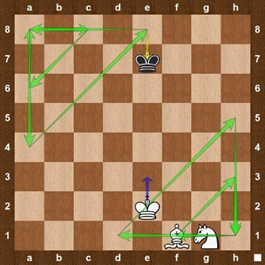
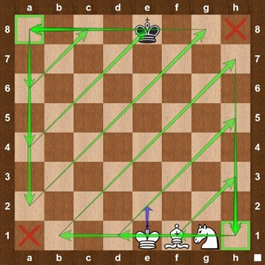
If we had a dark squared Bishop, we could only checkmate Black on a1 or h8. Black will therefore try to stay in the center of the board, and if they can't, then they will move towards the "wrong" corner, meaning a corner in which we can't checkmate the King. White however, wants to force Black's King to a8 or h1. To accomplish this, there are two well-known methods that can be used. One is called Delétang's Triangle Method and the other is called The W Method. You only have to know one of these methods. The second method is already explained by Dr. Ambar Chatterjee in the previous article. Hence, I will concentrate on the 1st method.
In this Study, we will learn the first one. The basic idea is to restrict Black's King to smaller and smaller areas of the board as shown in the previous diagram. So, let’s start.
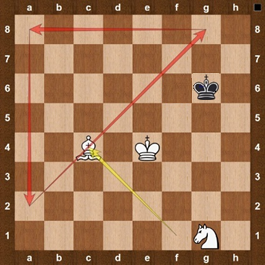
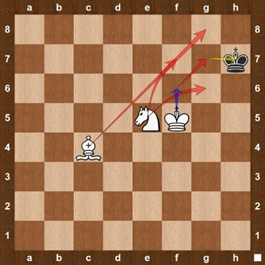
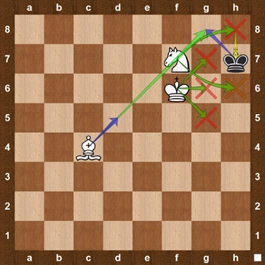
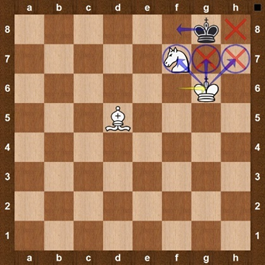
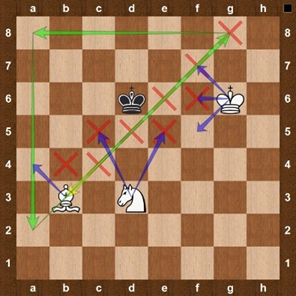
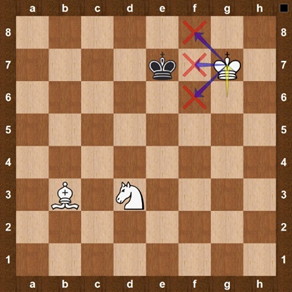
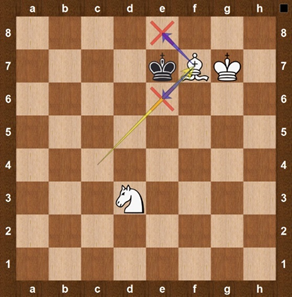
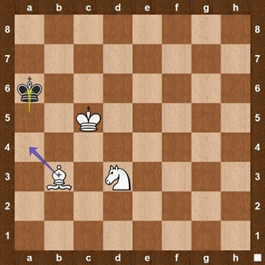
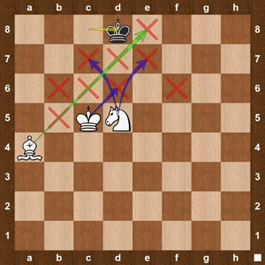
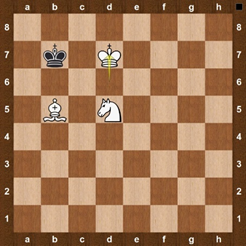
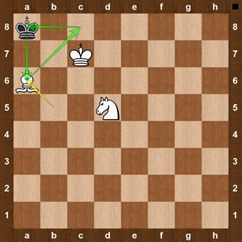
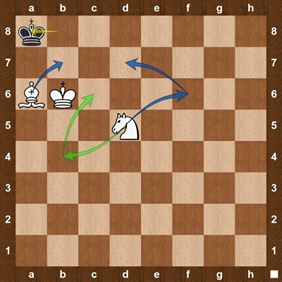
SUMMARY
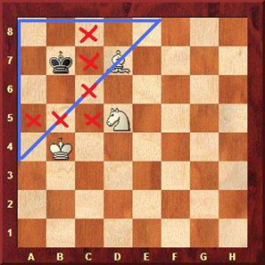
1. We divide the chess board onto three Triangles: Large Triangle, Medium Triangle and Small Triangle. These are represented in green, blue and red. On the diagram black’s King is inside the Large Triangle. As you already know the only way to checkmate the King is to force him into the light square a8 (or h8) if we have the light square Bishop. We move the opponent’s King from the Large Triangle to Medium and then to Small one, where checkmate will be delivered. See how in the game above.
2. It is the Large Triangle in action.
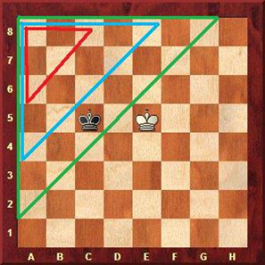
Black’s King cannot escape and only limited by 8 squares he can move at. Bishop is placed at its ideal square. Ideal square is on the diagonal (side of the Triangle), one square up: b3 or f7. The Knight is positioned on the ideal square also. The ideal square for the Knight is d3, it should be on the same row as the Bishop but one square apart. Why are these ideal squares? When Bishop and Knight are placed in its ideal way, they form a wall, preventing the black’s King from breaking through. Blue X’s show the squares controlled by white.
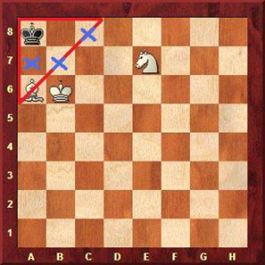
3. We have moved black’s King to the Medium Triangle. The basic idea here is that the Bishop is at its new ideal square c7, which is on the side of the Triangle, one square away from the edge of the board. The Knight is also at its new ideal square d5, on the same column/row as the Bishop, but one square apart. White King pushes the opponent’s King from the bottom towards the Small Triangle. Black King is only limited by 6 squares.
Our job is almost done here. Black’s King is now at Small Triangle and is locked to only 2 squares. There is a checkmate in 2 at this position above. But be careful, there is still a chance for a Draw here, don’t let the win slip and make each move with a check from now on.